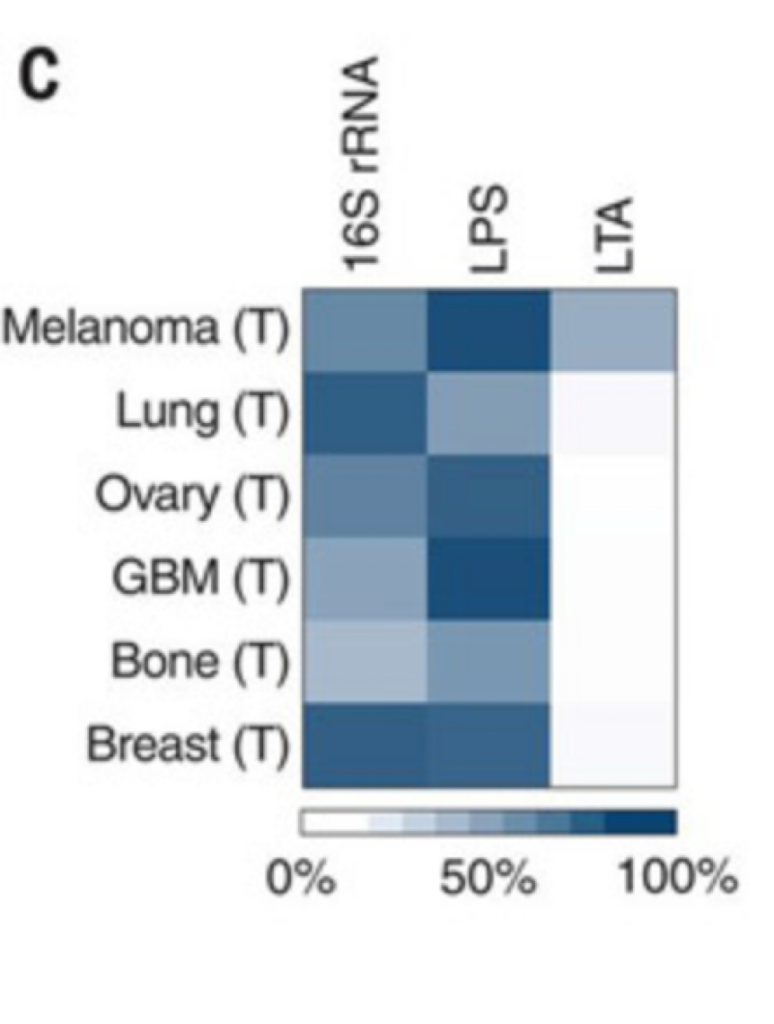A risk factor for multiple forms of cancer - LPS endotoxemia
-
The human tumor microbiome is composed of tumor type-specific intracellular bacteria
In this study 1500 cancerous tumors that were surgically removed and then examined for the presence of both bacteria and lipopolysaccharide (LPS) endotoxin. The “heatmap” graphic from this study shows that a high percentage of melanoma, ovary, glioblastoma (GBM), and breast cancers contain LPS, lesser quantities in lung and bone cancers. (Not shown is the absence of LPS in normal tissues from healthy volunteers and in non-cancerous tissues. The increased “LTA” in melanoma represents lipoteichoic acid, the counterpart of LPS in Gram-positive microbes.)

The presence of LPS in these cancers is consistent with other studies showing that LPS is a factor in cancers that include:
Colorectal
Esophageal
Breast
Prostate
Liver
Acute myeloid leukemia
CholangiocarcinomaIt is know that LPS is a potent driver of inflammation when it enters the bloodstream. Colonic dysbiosis and small intestinal bowel overgrowth (SIBO) are situations involving inflammation of the intestinal lining and increased intestinal permeability, allowing higher levels of LPS to enter the blood and take up residence in breast, liver, and other tissues where it provokes an inflammatory response in those sites, as well.
It is not clear to me whether LPS is an initiating cause of the cancer or simply makes the cancer grow and metastasize once it becomes established.
-
Georgi has a large number of posts about LPS.
-
Over the years, the medicial industry has been trying to pinpoint the causes for various cancers: smoking and lung cancer,
estrogen and endometrial cancer,
lack of fiber and colon cancer.I have not seen much interest in LPS endotoxemia. Glycine is known to lower the risk of intestinal barrier dysfunctions.
-
This thread provides another approach to lowering endotoxin.